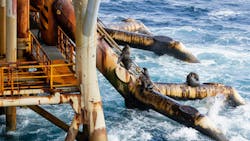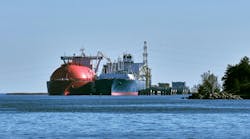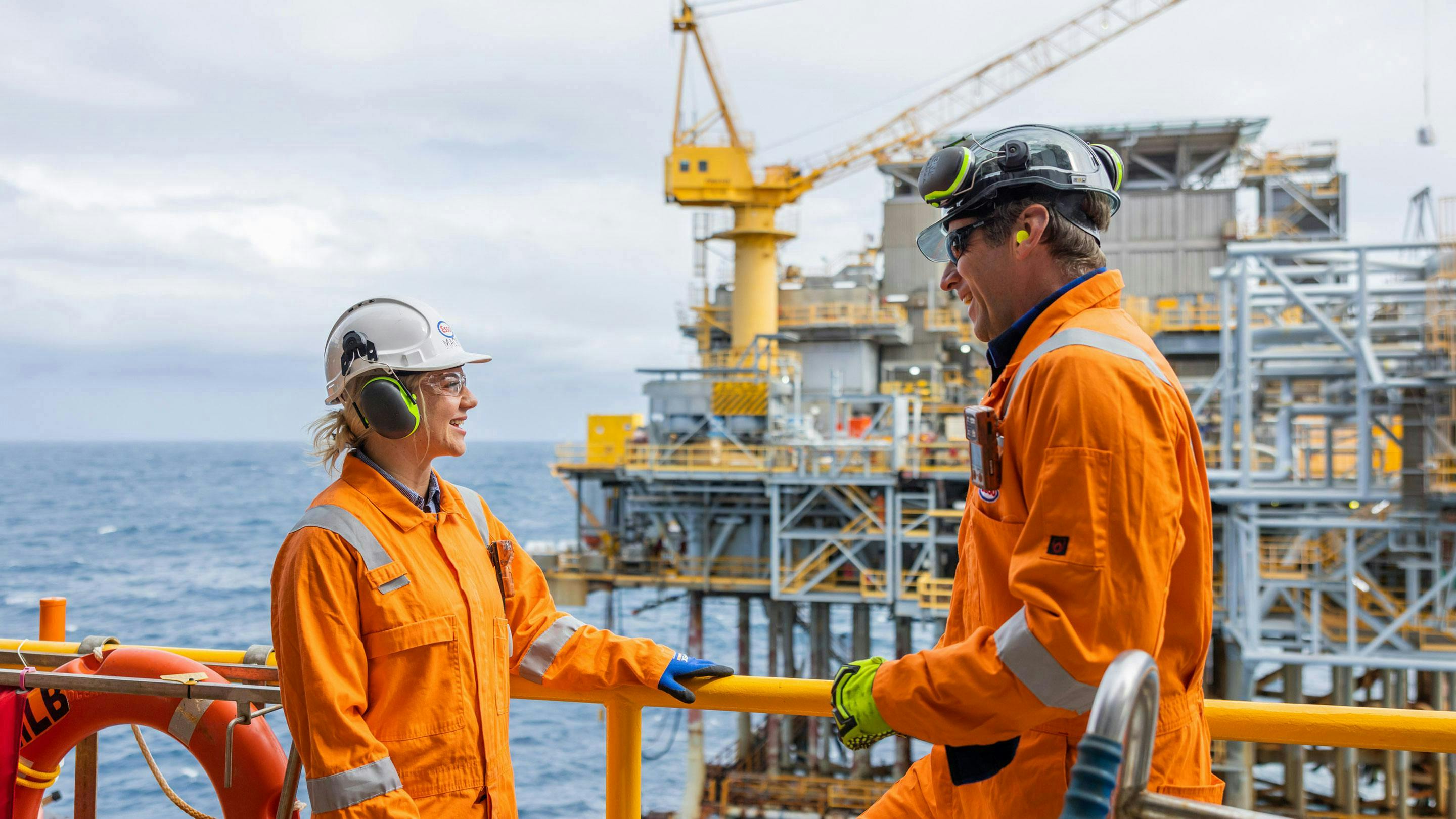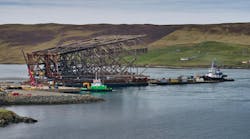Solar/turbine pods powering inactive Esso Australia platforms
Esso Australia has issued updates on its platform decommissioning and well plug and abandonment (P&A) programs in the Bass Strait offshore Victoria.
The company and its partners have produced oil and gas from 19 platforms, but activity has ceased on 13 of these.
Small amounts of power are still needed on the inactive platforms, mainly to safeguard the steel structures from rust and corrosion. Esso Australia is now employing energy pods on some of the facilities; the pods use solar panels and wind turbines to generate renewable energy, in place of fuel-powered generators.
One recent installation was an energy pod on the Fortescue platform, with solar panels around the sides and a wind turbine mounted on top.
Once the platforms have been removed, they will be transported to Barry Beach Marine Terminal for recycling and disposal, where most of the Gippsland Basin facilities were originally built. The terminal has supported Esso Australia’s offshore operations for more than five decades.
In addition, the wells team has to date P&A’d more than 200 offshore wells, said project manager Richard Perry, installing cement plugs following rigorous pressure testing.
The team has developed a well operations management plan. This is designed to ensure all operations are conducted in compliance with regulatory requirements, also drawing on ExxonMobil’s experience managing decommissioning campaigns offshore eastern Canada, the US and the North Sea.
According to the company, the Bass Strait P&A campaign is among the largest of its kind globally. Involving a multidisciplinary team that includes geoscientists, well integrity engineers, reservoir and regulatory specialist, and HSE professionals.
Once all wells have been safely P&A’d, each platform is placed in a safe state until ready to be removed and transported to Barry Beach Marine Terminal.
About the Author
Jeremy Beckman
Editor, Europe
Jeremy Beckman has been Editor Europe, Offshore since 1992. Prior to joining Offshore he was a freelance journalist for eight years, working for a variety of electronics, computing and scientific journals in the UK. He regularly writes news columns on trends and events both in the NW Europe offshore region and globally. He also writes features on developments and technology in exploration and production.




